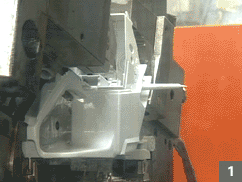 |
 |
 |
| Injection molding of motor housings |
 |
   |
|
 |
Injection molding.
At STIHL we not only manufacture plastic components using conventional injection molding techniques with single and multiple cavity molds, but also with new production methods such as the internal gas pressure or 2-component process. In subsequent production processes, such as tampo printing or vibration welding the parts are processed and then assembled into modules ready for installation.
We rely on a "simultaneous engineering process" to reduce costs and further improve quality and productivity. In other words, the design and production engineers work closely together; production experience flows directly into the development of new products.
|